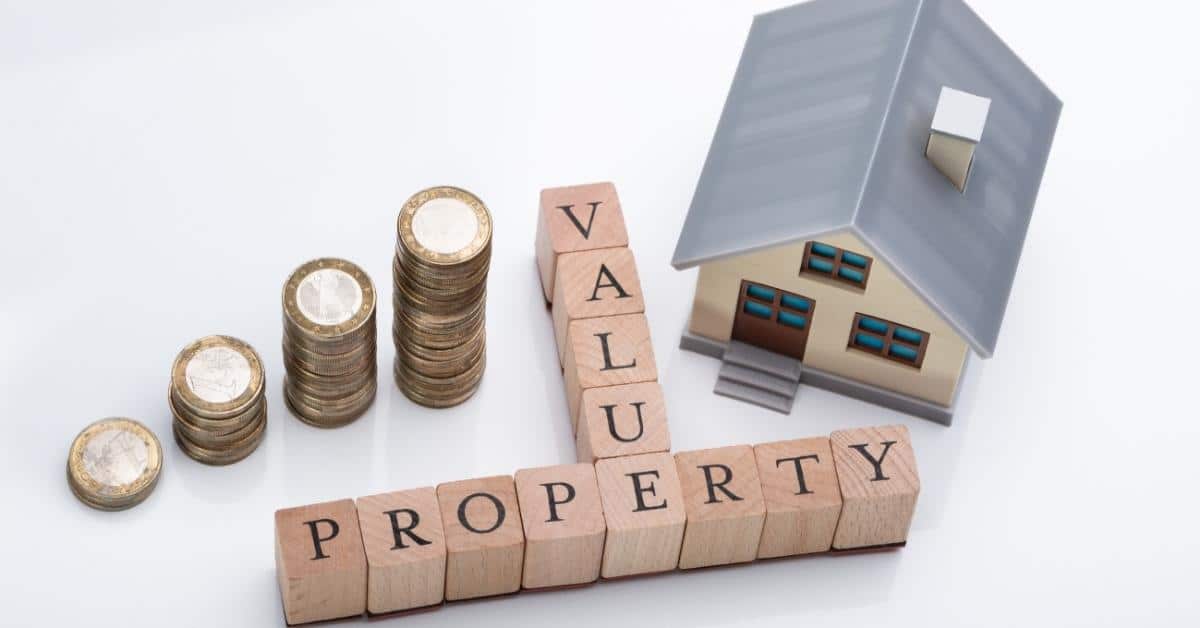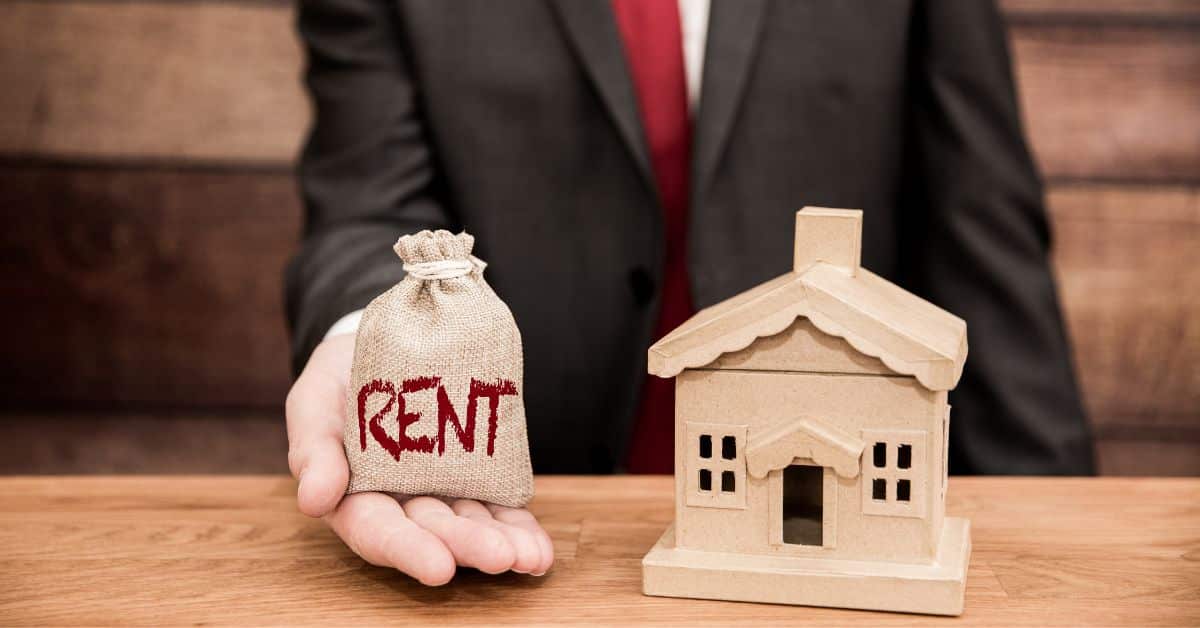Terms like gross rent multiplier (GRM), cap rate, principal and interest (P&I), net operating income (NOI), and others are important for rental property investors to know and understand. Commercial realtors, banks, and other investors may use these terms.
Additionally, some calculations like gross rent multiplier help you determine the value of a property, the likely return on your investment, and other important figures. So, we created a guide to teach you everything you need to know about GRM, how to calculate it, how to use it, and more
The gross rent multiplier is a figure investors use to compare deals. The GRM is equal to the purchase price or current market value divided by the annual rental income. It is one of the most basic calculations an investor can use when comparing properties.

It is extremely simple to calculate the gross rent multiplier, which is one of the reasons it is so popular with investors. To calculate the GRM you need the purchase price or the current market value.
The figure used to determine GRM is the preference of the investor. However, the purchase price is usually a better figure if you know what it will be and you are interested in determining the GRM compared to other properties in the area.
You can use property estimation sites like Zillow and Realtor.com. However, you may not have the full picture as these sites calculate estimates based on their limited available information. A better way to calculate the actual market value for a property is to work with a realtor with experience in the specific market you are calculating GRM. Either way, you can look at homes that recently sold and use those sale prices.
You will want to calculate the projected rental income you can make from the property. Check out similar properties to determine the market rental value. If your home is a three bedroom, two bath, you will want to look at the rental rates for similar properties. Also, take into account any other features that your home shares with other local properties, school districts, and other amenities that make the area desirable.
You can check the local MLS and sites like Zillow to get an idea of the rental prices in the area. Just be sure you are using properties that are comparable.
The gross rent multiplier and cap rate are both figures that investors use to determine the worth of a rental property. Both are simple to calculate, making them easy for anyone to use.

The formula for cap rate is the market value of a home divided by the net operating income, while the gross rent multiplier is the market value divided by the gross rental income. In a hurry, the GRM is the fastest to calculate.
However, if you want a more accurate idea of the investment value of a property, the cap rate gives a better prediction. The Cap rate uses the net operating income, which better reflects the investor's actual profit potential for a home.
Neither calculation factors in mortgage costs or capital expenditures that add value to the home, like replacing a roof, upgrading the kitchen, or other upgrades. The reason for this is that meant property investors pay cash for rentals. So, mortgage costs are not a concern for them.
Net operating income does not include principal and interest (P&I) mortgage payments, it only includes operating costs. The formula for net operating income is income minus all expenses other than capital expenditures.
An investor is looking at two properties, one with a sales price of $300,000 and another that costs $250,000. The $300,000 property is a four-bedroom home with three bathrooms that rents for $2,700 per month. The second is a three-bedroom home with two bathrooms that rents for $1,800 monthly.
To calculate the first GRM, you must multiply the monthly rental rate of $2,700 by 12 to calculate the total gross annual income of $32,400. Then divide the purchase price of $300,000 by the gross income, and you get the GRM which equals 9.26.
For the second, you divide the $250,000 sales price by the total yearly gross income of $21,600 to get the GRM, which is 11.57.
The cap rate is a bit different because it uses the net income instead of the gross income. You need to figure out the net income. So, you need to determine how much the property will cost you to own as a landlord for a year. Figures you need to include in the expenses include:
So, if the annual expenses for a property are $10,500 and the gross rental income is $45,000. You would subtract the expenses from the income to get $34,500. If you wanted to calculate the cap rate for a home worth $350,000, you would divide the value by the $34,500 net income for a cap rate of 10.14.
If you have another property with annual expenses of $9,000 that generates the same gross rental income, you would use $36,000 net income. Then divide the market value of $350,000 by the NOI of $36,000 for a cap rate of 9.72.
The gross rent multiplier has limitations. However, there are situations when GRM is still valid. Suppose you are looking at several properties in the same neighborhood. You know that the HOA dues and tax rate are the same, so you do not need to factor those into the equation. In that instance, the GRM is a great way to easily compare properties within that community.

You can also use GRM when you are considering property upgrades. For example, if you have several homes that you are going to update, you may want to calculate the GRM for those properties to determine where that upgrade will have the biggest impact.
To determine the pre-upgrade GRM, you can use the home's sale price or the market value. Then, divide that by the annual gross rental income. When comparing properties before and after remodeling, it is more useful to use the current market value to calculate the GRM. Using the purchase price will not give you as much information when you do your comparison.
investors can also use these two figures to determine their pre and post-improvement rates for a given property. For example, if you are considering remodeling two of your rental properties, you would likely want to know which properties would have the greatest rate of return. In that case, you could calculate the pre-renovation GRM and the post-upgrade GRM.
If you are calculating the GRM of a property after a remodel, you will need the market value after the update. So, you will want to find comparable property values. Using the average of several properties similar to yours is an excellent way to determine the market value if you do not know how to complete a comparable market analysis (CMA).
You will also need to determine how much the upgrade will increase the rental value. Homes with bathroom and kitchen updates rent for hundreds more per month. For example, a two-bedroom, two-bath condo might have been worth $75,000 AS-IS and rented for $900 per month. With new bathrooms and a new kitchen, that property might rent for $1,100 to $1,200, and the property value may increase by $25,000.
So, to determine the GRM, you would divide the new property value of $100,000 by the gross rental income for the year of $14,400, giving you a gross rental multiplier of 6.94.
The pre-remodel GRM would be the original market value of $75,000 divided by the yearly rental income of $10,800, which gives you a gross rental multiplier of 6.94. So, the upgrade would not affect the GRM.
You could do the same calculations for other properties in your portfolio to determine where the upgrade would increase the GRM to determine where you should start upgrading your properties. Areas where the GRM increases would be better areas to focus on if you are using this method.
Investors can compare properties using GRM. However, it is important to consider all of the expenses associated with owning the property as well. For that reason, limit your use of GRM to comparing properties with similar overhead expenses.
Calculating GRM to compare a property with $5,000 in annual expenses to a property with similar property values but much lower overhead will not give you an accurate comparison.
You can use GRM and the market annual rental income to determine how much you should spend for a property to make that investment profitable. To do this, you will need to have the average GRM in the area. You can calculate this by calculating the GRM for properties you own in the area or you can calculate the GRM of several listed properties in the area.
So, if your average GRM for a given area is 7.5 and you know that a property rents for $50,000 annually, you could determine the market value by multiplying the two figures. So, for a property with a 7.5 GRM that generates gross rental income for the year of $50,000, the market value will be $350,000. So, if a property is on the market for $450,000, that would not be a great investment using this information.
There are advantages to using GRM for valuing properties and determining where you may want to invest in upgrades.
The gross rent multiplier calculation is one of the easiest to determine a property's investment value. It is easy to remember, and you need limited information to complete the calculation accurately.
When comparing the investment value of two or more properties with similar expenses, the GRM can be an easy way to compare the properties without adding all of the overhead.
The GRM is simple to calculate. You can track this information over time to determine whether your investment is becoming more or less profitable. If you are using GRM to compare the profitability of properties in your portfolio over a period, use the purchase price instead of the market value.
Using the purchase price will show you areas you acquired properties for lower prices that have increasing rental income potential. As an investor, these areas are good places to acquire additional rentals as long as the selling prices do not rise substantially.
The gross rent multiplier does not take many aspects into account. Therefore, it might not be the most precise figure for comparing properties.
The GRM does not take into account any property expenses. The gross rent is not the best figure for calculating the value of a property because that is not what you will actually make.
When using the gross rent multiplier, the figure does not consider the mortgage payments or interest you will pay on the property. It also eliminates other necessary property expenses.
Remember that when using GRM to compare property valuations, you must ensure their tax rates, HOA, and maintenance fees are similar. If you do that, creating a GRM grading scale may be helpful, especially if you are looking for properties to add to your portfolio in a specific neighborhood.
To create the scale, you will need several properties to compare in the same area. For example, if you have three homes in a given neighborhood. You could calculate the GRM for each to come up with an average. The average would be your middle figure. So, if the GRMs are 10.4, 9.1, and 7.8, the average GRM for the neighborhood is 9.1. Anything below that would be a low GRM anything above that would be a high GRM.
In the neighborhood in the example, you would ideally want to acquire properties with a GRM at or below 9,1. In another area with three properties that have GRMs of 11.1, 10.9, and 9.9, the average is 10.6. So, you would consider a GRM of anything below 10.6 as a low GRM.
There isn't a specific 'good ' GRM. A good GRM is equal to or lower than the average for properties in the area. The lower the GRM, the more rent you produce for your initial investment. So, a property valued at $150,000 that collects $15,000 in annual income will have a gross rent multiplier of ten, while the same property producing $20,000 in annual income has a GRM of 7.5. The property generating $20,000 in rental income with a 7,5 GRM is a better deal if all other factors are the same.
The gross rent multiplier is a quick, helpful calculation in some comparisons. However, comparing a property with high homeownership costs is not great compared to one with low overhead. For example, if you compare a single-family home to a condo, you need to know the homeowners association fees. The condo likely has monthly HOA dues, while the home may have an annual management fee.
If the condo association charges $300 per month and the single-family HOA fee is $450 annually, that will significantly impact your potential rental income. In this case, it would be better to use a cap rate to compare the two properties.
A better way to determine the investment value of your properties is to use various applicable rental property calculators and add the figures to a spreadsheet with the figures for the other properties in your portfolio. That way you can compare a more complete set of data.
Some of the figures you should add are net operating income, cap rate, debt service coverage ratio (DSCR), and annual return on investment (ROI). Calculating these figures and keeping them in a file will make comparing new properties much easier.
It is also good to copy your data sheet each year and update the market value and other information. That way, you can compare these figures year-to-year to determine what areas are indeed the most profitable for you over time.
A property you acquire for $100,000 that generates a net operating income of $900 per month has a cap rate of 9.25. If the rental rates in the area go up by $300 per month, the new cap rate would be 6.94 if you use the purchase price. You would likely want to show the decrease in the cap rate in that situation.
The GRM for properties can help investors determine whether to consider acquiring a given property. However, with the limits GRM presents, there are some pitfalls investors need to be mindful to avoid. Read the answers to the frequently asked questions about gross rent multiplier to learn more about how the calculation works.

A GRM grading scale is a metric created by an investor for a given area. It takes into account the average GRM in the area. From there, an investor can conclude that a property with a lower GRM is a good investment, while a higher GRM property may not be worth the investor's time.
Investors use GRM to calculate the profitability of a property. It is not a figure that is commonly used by lenders. However, you can use it as an investor to gather general information. If the GRM for a property is lower than most properties in the market, the lender will likely see it as a more favorable deal. It has a relatively low cost for the gross rent it generates.
GRM is not the best indication of property value. It is a basic calculation to give investors an idea of whether or not they should consider acquiring a property in a specific market. Generally, this would be an area the investor knows well and likely owns other properties.
You need an appraisal or CMA completed by a professional real estate agent for property valuations. However, using the reverse GRM method to determine the profitable price of a property is helpful for some investors. For example, if you know that the average GRM in the area is 5.6 and the annual income the property generates is $22,000, you would not want to pay more than $123,200 regardless of the property value.
As a rental property investor, you want to invest in homes with high ROI. An increase in the property value over time is desirable. However, the main objective for rental property investors is generating rental income.
In terms of the investment value of a property using a cap rate that follows the same formula but replaces the gross rental income for net operating income. The consideration of income and expenses in the cap rate makes it better for determining the value of properties in different markets.
As an investor, you want to ensure you have the most helpful property valuation information. The gross rent multiplier is a fast way to determine if a property could be a valuable part of your rental property portfolio. However, it should not be your sole calculation for determining a property's value.
GRM figures are more useful when comparing them to other properties you own or similar properties in an area where you are shopping. However, once you determine several properties with a desirable GRM in an area, you need to compare all of the details before deciding which property has the best investment value.
In reality, no one number tells you whether you should buy a home. You need to compare an array of data on a property to decide if it is a sound investment. Furthermore, if you want to get the most out of your investment, it is a good idea to look for properties w the rental rates are climbing but the home prices remain relatively low.
Unless you collect GRM data over time, you will not know whether an area's gross rent multiplier is increasing or decreasing. So, if you plan to use GRM as an investor, keeping historical GRM data for all over your properties will give you valuable data you can compare over time.
We encourage you to share this article on Twitter and Facebook. Just click those two links - you'll see why.
It's important to share the news to spread the truth. Most people won't.